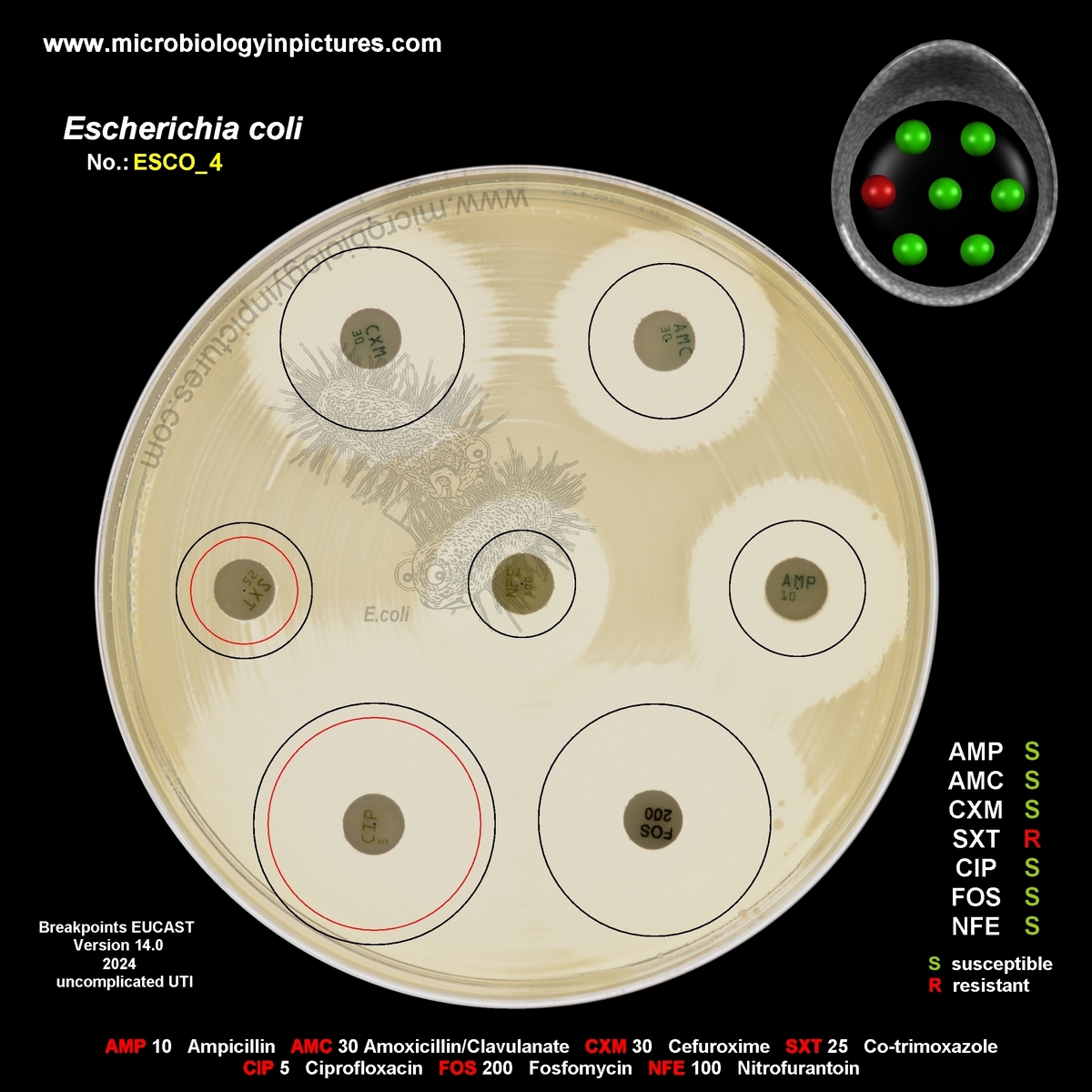
Escherichia coli resistant to Trimethoprim-Sulfamethoxazole (Co-trimoxazole). Sulfonamides.
Co-trimoxazole was first developed in the 1960s as a combination therapy to enhance antibacterial effectiveness and broaden the spectrum of action. The combination of trimethoprim and sulfamethoxazole was introduced clinically in the 1970s under the brand name Bactrim (or Septra, depending on the region). Since then, it has been widely used to treat both bacterial and some protozoal infections. Although its use remains common, resistance to co-trimoxazole has become a growing concern, limiting its effectiveness for some infections
Co-trimoxazole was first developed in the 1960s as a combination therapy to enhance antibacterial effectiveness and broaden the spectrum of action. The combination of trimethoprim and sulfamethoxazole was introduced clinically in the 1970s under the brand name Bactrim (or Septra, depending on the region). Since then, it has been widely used to treat both bacterial and some protozoal infections. Although its use remains common, resistance to co-trimoxazole has become a growing concern, limiting its effectiveness for some infections
| AMP | Ampicillin | AMC | Amoxicillin/Clavulanate | CXM | Cefuroxime | SXT | Trimethoprim-Sulfamethoxazole |
| CIP | Ciprofloxacin | FOS | Fosfomycin | NFE | Nitrofurantoin |
Text generated with the help of OpenAI's language model, ChatGPT.
